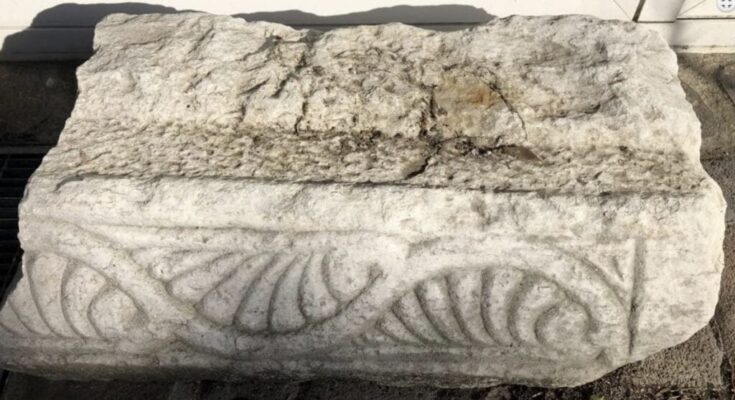
Germany returned a Byzantine artifact to Greece, it was made public on Friday.
A stone architectural element from the Middle Byzantine period from the 8th to 12th centuries AD was recently repatriated from the city of Mainz in Germany and is now back “home,” in Greece.
In a statement issued by Greece’s Ministry of Culture, the archaeological artifact is defined as “a part of an epistyle or lintel,” which is 0.15 meters tall (5.9 inches), 0.52 meters long (1.7 foot), and 0.29 meters wide (11.4 inches).
The statement also notes that it is elaborately “adorned with a winding vine and half-leaves in the gaps,” demonstrating the artistic craftsmanship of the time of the Byzantine Empire, which was the Eastern Roman Empire.
The artifact’s journey back to Greece began when a private individual, who had received the piece as a bequest, revealed its origin and decided to also reveal its existence.
Recognizing the necessity of returning this cultural relic to its proper location of origin, the individual contacted the Greek Consulate General in Frankfurt in the spring of 2022.
The woman stated it was her intention to return the old relic, as she wanted to show to the world her respect for its Greek heritage.
According to the Greek Culture Ministry, “The Consular Authority, in collaboration with the Directorate of Documentation and Protection of Cultural Property, proceeded with the necessary procedures for the monument’s return to Greece.”
Where did the artifact Germany returned to Greece come from?
According to the Ministry, the artifact “originates from Acrocorinth,” which is an archaeological site near Corinth in southern Greece.
This belief is based on information experts extracted from its “stylistic rendering, particularly the plasticity of the relief leaves,” which is similar to other architectural components from ancient Corinth and the surrounding region of Corinthia.
This act of repatriation is part of a larger trend of German residents willingly returning cultural artifacts to their home countries.
Greece’s Ministry noted that “the voluntary return of the architectural member, which had been illegally exported from Greece,” is only one of many similar steps taken in recent years.
This developing trend reflects a greater knowledge and sensitivity to safeguarding cultural heritage and returning cultural objects to their proper owners following centuries of loot.
The Ministry added in its statement that this trend is “a result of increased public awareness about the need to preserve cultural heritage and return cultural goods to their rightful countries.” Such initiatives are backed by a variety of efforts at both the national and international levels.
The architectural piece will be transferred to the Ephorate of Antiquities of Corinthia in the near future. It will be stored there and further examined by archaeologists and experts.
This successful repatriation demonstrates the value of international cooperation in cultural heritage protection and serves as a reminder of our shared obligation to preserve history for future generations.



